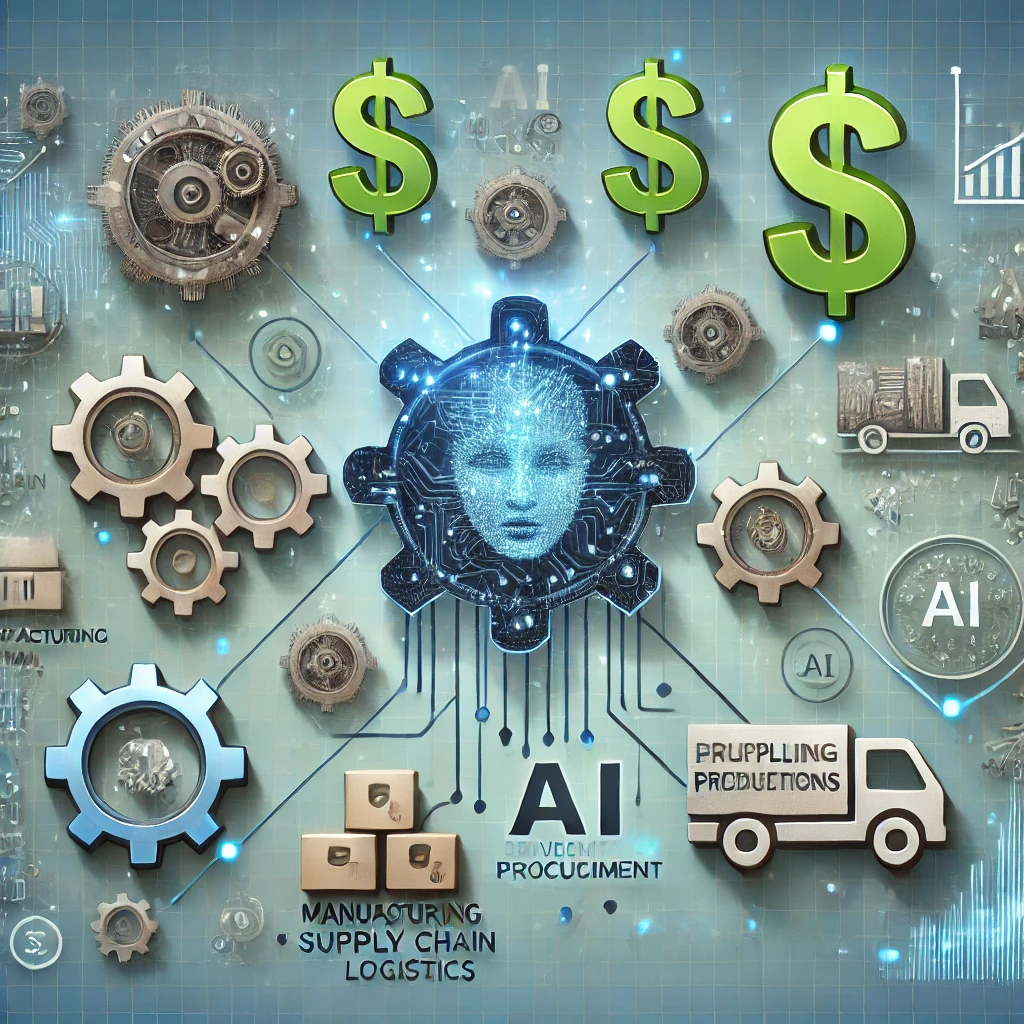How AI is Driving 30% Cost Reductions in Key Procurement Categories

The evolution of AI has sparked transformative changes across multiple procurement categories. As technology amplifies productivity, procurement departments should be able to negotiate substantial cost reductions on these services, as vendors realize significant efficiency gains. Here’s how AI is reshaping these categories and why at least 30% savings should be on the table.
1. Creative Design
AI-driven tools in creative design are leading to an unprecedented rise in productivity. Graphic design platforms like Adobe’s Firefly and Canva’s AI-assisted features allow designers to generate high-quality visuals in a fraction of the usual time. Remember how much time we saved from remove.bg? Agencies are now leveraging these tools to streamline workflows, often producing content four times faster than traditional methods. With AI-driven automation enabling faster turnarounds, procurement can rightfully argue for substantial cost adjustments, given that agencies now rely on fewer resources and staff to deliver the same volume of work.
2. Outsourcing
Many business process outsourcing (BPO) tasks involve repetitive data processing and low-risk decision-making. AI-based automation in data entry, analysis, and even basic decision-making is doubling productivity by minimizing human involvement. BPOs that previously required large teams can now achieve similar or better results with fewer staff and advanced AI models. This shift can directly impact operational costs, which procurement teams can use to negotiate down prices, aiming to reflect the efficiencies gained.
3. Content Creation
From text generation to video production, content creation has seen some of the most profound AI advancements. Content tools like ChatGPT and Midjourney have significantly shortened production times, with quality levels approaching or surpassing human capabilities. For agencies and freelancers, AI is often as much a creative partner as a tool, enabling output that’s up to five times faster than before. For procurement, these efficiencies offer a clear case for renegotiating pricing structures to reflect the lower operational costs for providers.
4. SaaS Solutions
Many SaaS solutions have started to shift from a per-seat to a usage-based pricing model as AI enables more dynamic scaling and personalization of services. With AI-driven efficiency, SaaS companies can deliver more powerful functionalities with lower overhead. As this shift accelerates, procurement teams can leverage AI’s impact to renegotiate contracts. Transitioning to consumption-based billing offers an opportunity to optimize costs, especially for companies with fluctuating usage needs.
5. Translation Services
AI-powered translation tools like Google Translate and DeepL are rapidly closing the gap between automated translations and human quality. These tools dramatically reduce turnaround time for bulk translation needs and can handle multiple languages simultaneously, offering quality at a much faster rate. Translation agencies that incorporate these tools benefit from higher productivity with fewer human resources, justifying a considerable discount for clients who are still paying rates from a pre-AI era.
6. Customer Support and Call Centers
AI chatbots and voice assistants are transforming customer support, allowing businesses to handle inquiries faster and more accurately. With tools like conversational AI, a significant portion of low-complexity interactions can be automated, freeing human agents to focus on higher-value tasks. As vendors reduce staffing requirements due to automation, procurement can press for a discount that reflects these operational efficiencies, potentially improving cost savings and response times simultaneously.
7. Market Research and Data Analytics
With the rise of AI-driven data analytics platforms, tasks like consumer trend analysis, sentiment analysis, and competitive benchmarking can be automated or conducted at a much faster pace. Many AI tools can now analyze complex datasets, delivering insights in real-time. This automation reduces the need for large research teams, allowing providers to scale down resources and reduce costs. Procurement teams should leverage this shift to secure better rates from market research vendors, given the reduced need for manual labor.
8. IT and Cybersecurity Services
AI in IT and cybersecurity has enhanced monitoring, threat detection, and incident response capabilities. Automated cybersecurity tools can detect and respond to threats with minimal human intervention, which significantly reduces reliance on human resources and allows for faster and more scalable security operations. For procurement, this represents an opportunity to negotiate lower fees with service providers, who are benefiting from these efficiencies.
9. Legal Document Review and Contract Management
Legal AI tools now support rapid document review, contract analysis, and compliance checks, enabling law firms and contract management providers to automate substantial parts of their workflows. What used to take hours can now be done in minutes, cutting down the labor required for routine legal work. Procurement teams can leverage these advancements to renegotiate costs, especially for high-volume contracts that AI can quickly analyze and review.
10. Recruitment and HR Services
AI-powered recruitment platforms streamline the hiring process by automating resume screening, candidate assessments, and interview scheduling. This means recruitment agencies and HR providers can manage more candidates with fewer resources, reducing their operational expenses. Procurement can use this efficiency gain to negotiate a more favorable rate for recruitment services, as AI takes over repetitive tasks that previously required extensive staffing.
11. Logistics and Supply Chain Management
AI is enhancing demand forecasting, route optimization, and inventory management, enabling logistics providers to cut costs and reduce delivery times. By leveraging these tools, companies can streamline supply chain operations, resulting in substantial savings. As logistics companies reduce costs through AI, procurement should negotiate for lower rates, particularly in areas where AI has optimized processes that used to require human oversight and planning.
Conclusion
Across these additional categories, AI-driven efficiencies are creating tangible cost-saving opportunities for vendors. As AI adoption grows, procurement should proactively negotiate contracts to capture these savings. By aiming for at least a 30% discount, procurement teams not only benefit financially but also encourage vendors to continually invest in AI, fostering an ecosystem of productivity and value.
Pavithra, with 16+ years of experience, specializes in procurement digital transformation, leading transformation programs worldwide. Enthusiastic about AI's potential, she founded Procurie to deliver unique AI solutions to procurement teams.
